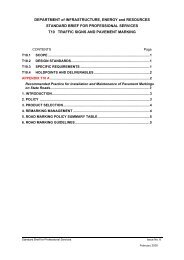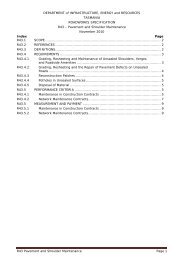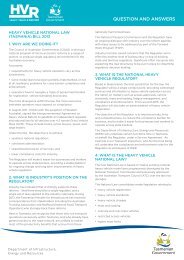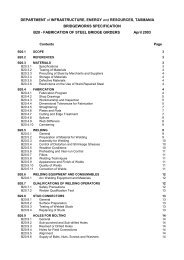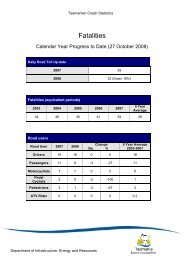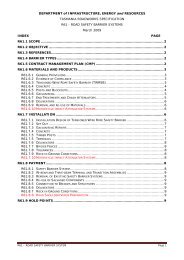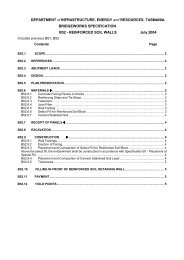Public Environment Report Tarkine Forest Drive ... - Transport
Public Environment Report Tarkine Forest Drive ... - Transport
Public Environment Report Tarkine Forest Drive ... - Transport
- No tags were found...
You also want an ePaper? Increase the reach of your titles
YUMPU automatically turns print PDFs into web optimized ePapers that Google loves.
Known threatsThe key threat to windswept spider orchid is clearance of habitat in the near–coastalareas of the west and northwest coasts. Recently, the key threat has includedinappropriate fire regimes which have resulted in changes to the vegetation typessupporting the species. In summary, the threats to the species include the following(Threatened Species Section 2010):Land clearance (including agricultural and coastal development)Development on public land (many populations of the species are within theArthur–Pieman Conservation Area)Inappropriate fire regime (greater abundance at sites subject to higher intensitysummer fires)Recreational activities (further development of recreational activities within theArthur–Pieman Conservation Area)Cattle agistment (Arthur–Pieman Conservation Area is subject to cattle grazingthrough agistment licences)Phytophthora cinnamomi (no populations are currently effected; however, there isa potential to introduce or spread through recreational activities within theArthur–Pieman Conservation Area)Stochastic risks (less than 250 mature individuals from fewer than 20subpopulations).The impacts of the proposed action are discussed in Section 5. No land clearanceassociated with road widening is shown for the area of most likely habitat associatedwith the heathland sections of Segments A, B and C. In the vicinity of habitat, roadwidening is limited to Segments A & the start of B (Appendix A maps 2 & 4). No changeto the level of recreational activities such as 4 wheel driving that could impact onhabitat is anticipated. No changes to cattle grazing are anticipated. Stochastic riskssuch as physical disturbance may potentially occur in the vicinity of unknown plantsalthough this is considered remote.There are no known pests or diseases that impact on this species. Although the speciesis not directly susceptible to Phytophthora cinnamomi, the plant pathogen can alterthe composition of the heathy habitat by displacing heathy species with tolerantgraminoids. This could affect the habitat suitability for the orchid. Fire outbreaks arenot likely to adversely affect this species directly as the habitat is unlikely to beflammable during the spring flowering period. Orchids are adapted to fire and typicallybenefit from periodic burns. Fire is used as a tool for habitat management forheathland orchids (Threatened Species Section 2010).SurveyThis species was the target of extension surveys in the Arthur Pieman Area in andaround known populations and likely habitat ((Wapstra et al. 2010).The roadsides along Segments A & B in the vicinity of known populations were targetedfor survey in 2009 (as outlined in section 4.9.2).The species was confirmed to occur at various locations in heathland between TemmaRd and Couta Rocks including one site 30m off the Temma Rd (NBES 2011).Ref: HB09080H001 PER <strong>Tarkine</strong> <strong>Drive</strong> 33P Rev 00/DL/CL/jw 67



